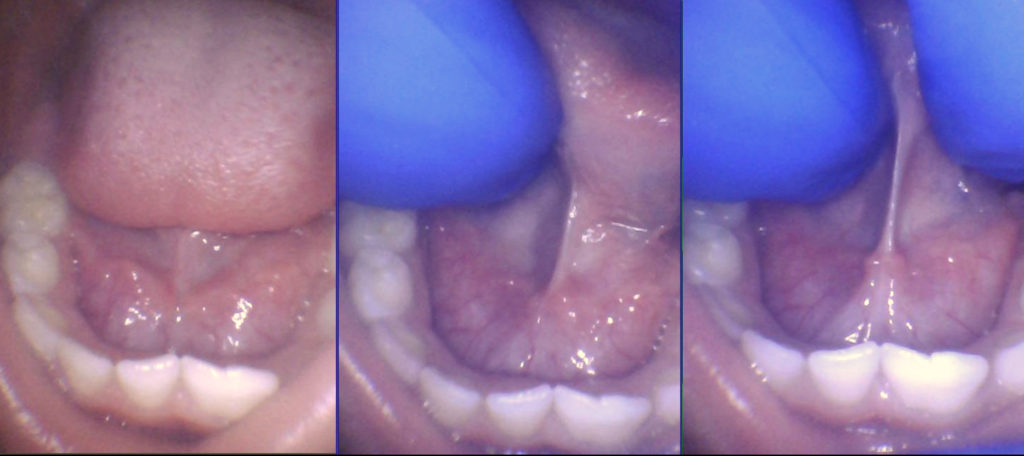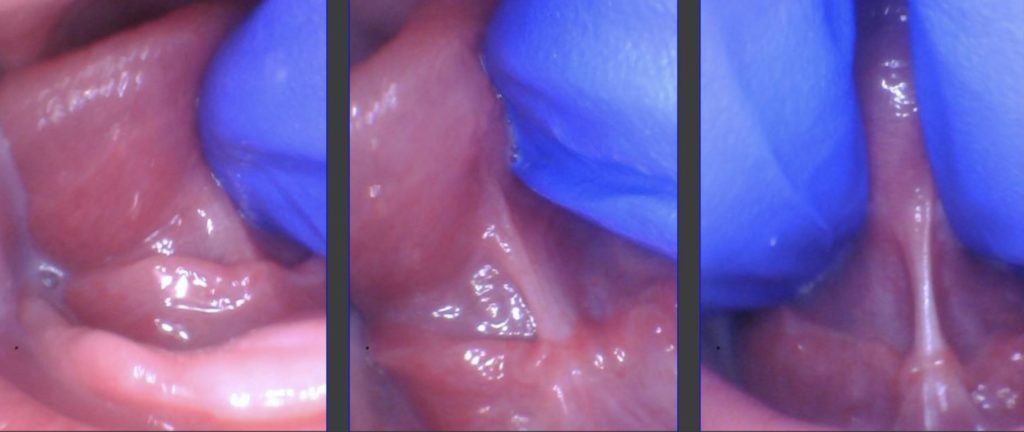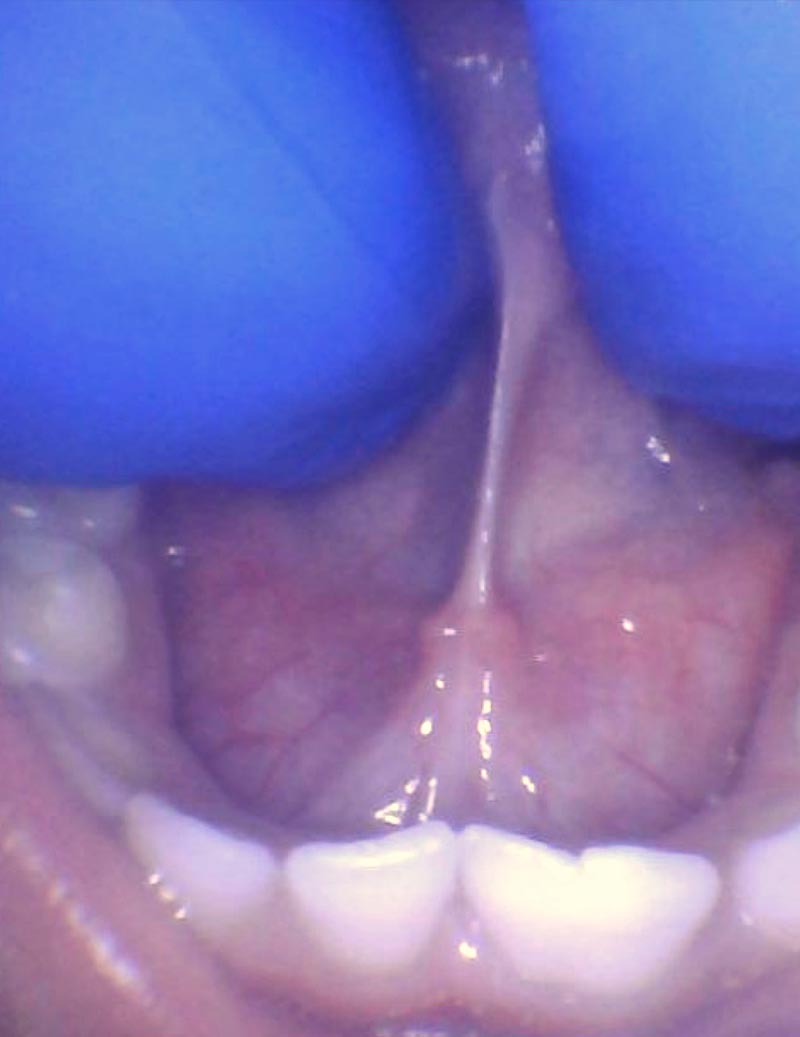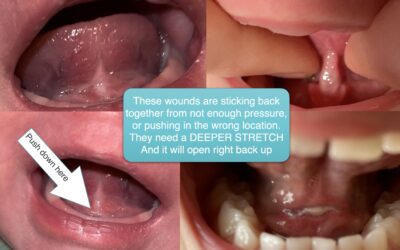What is a “posterior” tongue-tie?
We are taught in school that a tongue-tie is when the tongue is tied down to the tip. This is what pediatricians, dentists, speech, pathologists are taught. We are then taught that it rarely causes problems, or only affects speech a little bit, or maybe licking an ice cream cone. Just leave it alone, and definitely don’t release it they say!
As we saw last week, there are lots of symptoms affected by a restricted tongue, and interestingly, different degrees of restriction affects individuals differently (babies through adults).
Where one patient might have a frenum attaching 50% of the way to the tip, another might be 25% attached, and the 25% patient may have worse nursing as a baby, or speech, feeding, or sleep issues if a child or adult than the 50% attached patient.

This is the concept of a Spectrum of Restriction – from the not obvious, submucosal, or “posterior” tongue-tie (basically the frenum attaches less than 50% of the way to the tip) to the obvious (the frenum attaches >50% to the tip) or almost to-the-tip restriction that is considered an “anterior” tongue-tie.
A helpful analogy is the sailboat analogy by Dr. Ghaheri (ENT). All sailboats have a mast (the thick posterior fascia that all tongue-ties have right on top of the genioglossus muscle) and some have their sail up (the thinner webbing of fascia that you traditionally think of as a frenum).
So all anterior ties have a posterior component… if you just snip the sail, or anterior component, you did not get the whole restriction, and you should not expect a lot of great results. You might get a few good results, because you have given some function back to the patient.
I think this is why so many people think that treating a tongue-tie doesn’t work. They provide, or another provider did an incomplete release of fascia (connective tissue) and didn’t provide full mobility to the patient.
In reality, the appearance doesn’t hardly matter compared to the symptoms it is causing. After you do a lot of these, you are shocked by just how little restriction in a patient’s tongue can have wide-ranging impacts.

What looks like nothing at first glance could actually be a decent collection of fascia that when properly lifted (come from behind with two fingers and elevate the tongue) is quite restrictive to the posterior part of the tongue.
The posterior tie is not back by the tonsils. Some ENTs think this, that we are talking about some new entity in the throat… that’s not what this is. Check out these pictures of a posterior tie.
Finally, we have to distinguish between a “normal frenum” and a “pathologic” one. The problem is, without knowing the symptoms you can’t. For it to be a “tie” it has to be causing a functional problem.
So I prefer the term “symptomatic tongue restriction” and “asymptomatic tongue restriction” meaning if the restriction causes a problem for that patient, it’s a symptomatic tongue restriction. And you can’t tell from photos on Facebook. This one I showed could be causing no issues, in which case they would never come to see me for a consult. Just as I would never go to the endodontist for a root canal if I didn’t have pain or some pathology *no offense to my endodontist friends!*
How do you know what symptoms to look out for? Use a form like the Tongue Restriction Questionnaire, as we talked about last week. Download all our forms for free here: https://tonguetieal.com/professionals
We will talk next week about how to examine infants for a tongue-tie and lip-tie.



